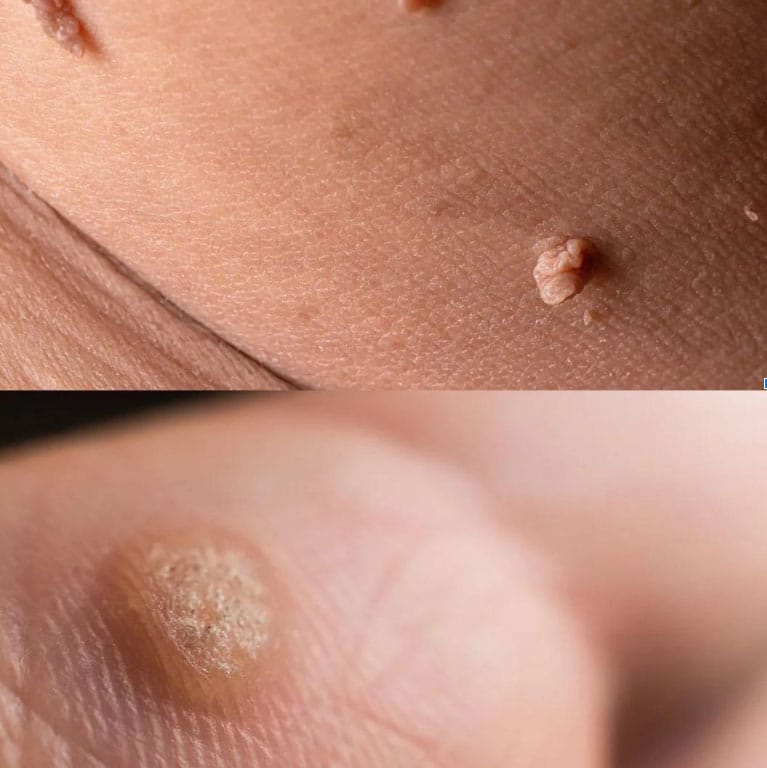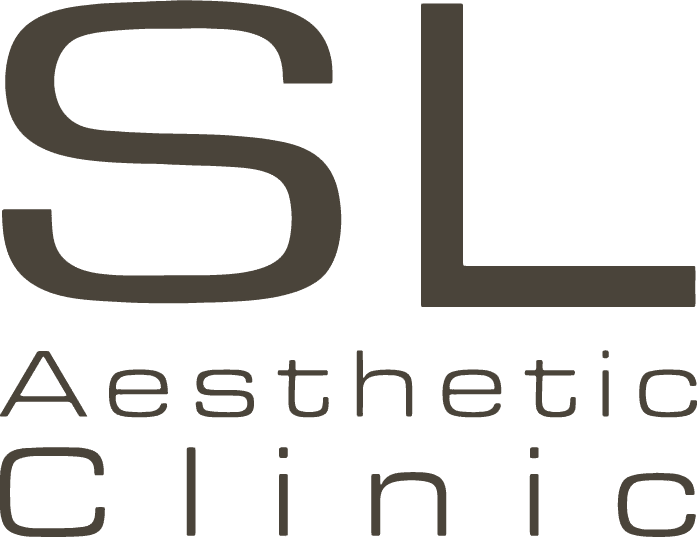Are you noticing small, flesh-coloured growths on your skin? They may be skin tags. We have safe and painless solutions to remove skin tags without leaving scars.
This article explores the nature of skin tags, the factors contributing to their development, and the professional removal techniques you can consider.
What are Skin Tags?
Skin tags, also known as acrochordons, are harmless skin growths that develop on the skin’s surface. They have a small and benign appearance. These growths are incredibly common, with half of all adults expected to develop at least one skin tag in their lifetime.
Skin tags are characterised by their flesh-coloured appearance and are often attached to the skin by a narrow stalk. Although they are typically painless, they can become irritated due to friction with clothing or jewellery. This irritation and cosmetic considerations often motivate individuals to seek skin tag removal in Singapore.
Skin tags do not indicate serious health issues. They are benign growths that can be safely removed by a professional.
What Causes Skin Tags?
Friction and Skin Folds
Skin tags are frequently found in:
- the armpits
- groin
- thighs
- eyelids
- neck
- under the breasts
These areas are hotspots for skin tags due to the friction generated between the skin in these areas. This friction can cause the skin to rub against itself or clothing, creating irritation and promoting the overgrowth of skin cells. Individuals with more skin folds and increased friction, such as obese individuals, may be more susceptible to developing skin tags.
Hormonal Fluctuations
Hormonal factors can also contribute to the formation of skin tags. Elevated levels of female sex hormones like progesterone and oestrogen have been linked to the formation of skin tags. Pregnancy, a time when oestrogen levels are notably high, can accelerate the growth and number of skin tags.
Interestingly, skin tags that appear during pregnancy may disappear post-childbirth, further suggesting that hormones play a part in skin tag development.
Insulin Resistance
Research has shown that skin tags appear more commonly in those with diabetes mellitus, insulin resistance, obesity and metabolic syndrome. As the skin tags themselves are often harmless, these individuals should not just treat the skin tags alone, but also address the underlying health issues at the same time.
Genetic Factors
Genetics may also have a hand in skin tag development. Some people are more genetically predisposed to develop skin tags and the propensity to develop skin tags often runs in families.
What’s the Difference Between a Skin Tag and a Wart?
Genetics may also have a hand in skin tag development. Some people are more genetically predisposed to develop skin tags and the propensity to develop skin tags often runs in families.

Skin Tags | Warts |
Soft and fleshy, typically hang off the flesh of the skin and attached to a stalk | Small and rough |
Usually same colour as surrounding skin, or slightly darker | Can be flesh-coloured, white or pinkish |
Occur due to friction | Occur due to the human papillomavirus (HPV) |
Can be smooth or slightly wrinkled | Cauliflower-like texture, rough |
Commonly found on areas with skin friction e.g. neck, groin, armpits | Commonly found on hands, fingers, feet and genitals |
No symptoms but can cause irritation especially in contact with clothing and jewellery | Can cause pain, itching and discomfort |
Not contagious | Contagious |
Professional Skin Tag Removal
Professional methods are the safest and most effective ways to remove a skin tag.
Cryotherapy
Cryotherapy is a common treatment for benign skin lesions, including skin tags. The procedure involves the application of liquid nitrogen to the skin tag, causing the cells to freeze and die, ultimately leading to the skin tag falling off. Liquid nitrogen in cryotherapy is non-toxic, and direct contact with the skin is not harmful.
At SL Aesthetic Clinic, we use Histofreezer, an FDA-approved treatment, to freeze and remove the skin tag.
Laser Therapy
Laser treatments, such as the CO2 laser, can treat skin tags effectively with minimal discomfort.. The CO2 laser emits a highly focused beam of light energy that is absorbed by the water within the skin cells. This absorption leads to rapid heating and vaporisation of the targeted skin tag, removing it in a very precise manner.
The laser will be adjusted to target only the specific area of the skin tag, minimising damage to surrounding healthy tissue. This precision helps to reduce the risk of scarring and other complications.
Is Skin Tag Removal Painful?
Skin tag removal is generally not painful. The procedure is performed under local anaesthesia with numbing cream or injected local anaesthesia, ensuring the patient’s experience is as comfortable as possible.
Post-procedure, patients may feel a mild stinging or burning sensation over the treated area, but this sensation is short-lived, and most patients are not bothered by it.
Why Home Remedies aren't Recommende
Although home remedies for skin tag removal may appear attractive due to the ease of using them and their low cost, they may not be safe or reliable. Using them could put you at risk of undesired complications.
Currently, there are no medically approved creams for skin tag removal. Removing skin tags without medical supervision can lead to infection, scarring, and excessive bleeding. We strongly recommend consulting a doctor for safe and proven skin tag removal methods.
Does Wart Remover work on Skin Tags?
Wart removal products are typically designed to target warts caused by the human papillomavirus (HPV). Such products contain ingredients such as salicylic acid and fluorouracil, which are specifically targeted for wart removal. Such solutions have not been proven to be safe or effective for skin tag removal.
Using wart remover on skin tags is not recommended for the following reasons:
Different composition: Warts and skin tags are two distinct types of growths with different compositions. A viral infection causes warts, while skin tags are benign growths of skin tissue. Wart remover products may contain ingredients like salicylic acid or cryotherapy agents that are effective for warts but may not be suitable or safe for use on skin tags.
Potential irritation: Wart removal products are formulated to target warts specifically and may be too harsh or irritating for use on skin tags. Applying wart removal to a skin tag could lead to irritation, redness, infections, or other adverse reactions.
Ineffectiveness: The composition of active ingredients in wart removal products are optimised for treating warts, but not for skin tags. Simply put, it is unlikely to deliver the desired results of removing your skin tags effectively.
Skin Tag Removal in Singapore
Skin tags are harmless growths. Yet, some people may not be comfortable living with them and may even see their appearance as unsightly. If you are one of those looking for a skin tag removal solution, seek a qualified professional to safely remove them.
SL Aesthetic Clinic provides skin tag removal treatments by certified practitioners in Singapore. Our doctors are committed to helping you eliminate your skin tags for clear smooth skin.
FAQ
There is no medical need to remove a skin tag unless it is bothersome or for aesthetic reasons. Skin tags do not typically require medical attention unless they change, cause pain, or start bleeding, so you should contact a doctor.
While it’s not entirely possible to prevent skin tags, maintaining a healthy body weight through a nutritious diet and regular physical activity may help decrease the likelihood of their development.
While cutting off a skin tag at home is possible, it’s not generally recommended due to the risk of infection, bleeding, and other complications. It is best to consult a doctor before removing a skin tag. See your doctor immediately if you notice any skin tag or mole changes
Skin tags could be a warning sign for underlying health issues such as high cholesterol or diabetes. If you have many skin tags, you should get tested for these conditions.
Whether skin tags will grow bigger if left untreated can vary from person to person. Some people may find that their skin tags remain relatively stable in size over time, while others may notice gradual growth.
Continuous hormonal fluctuations and friction in high-contact skin areas can also increase the size of existing skin tags.
Redness and swelling around a skin tag can indicate a more serious issue, such as an infection or allergic reaction. You should monitor the area closely and seek medical attention if you have concerns or if the symptoms do not improve with home care.
One session is usually sufficient for skin tag removal but your doctor may request for follow ups.
Like what you read? Share them!



